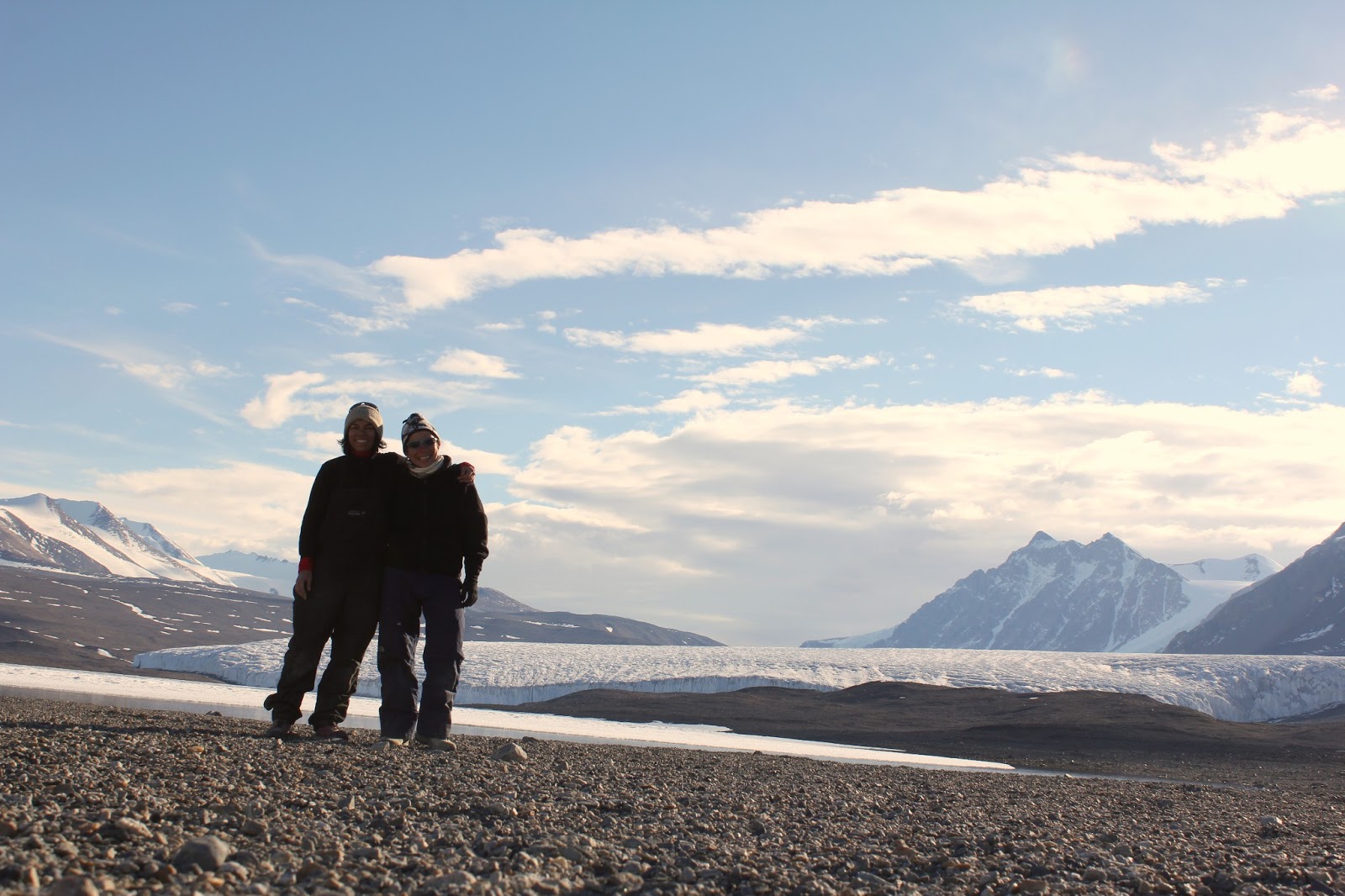University Valley is located at high elevation in the Dry
Valleys (1650-1800 m.a.s.l) in the Quartermain Range. It has a small glacier at
the head of the valley, and when we got there, it was covered in snow! This
was really surprising, but gave us a chance to see in situ just how quickly
snow in this valley sublimes and gets blown away by strong katabatic winds.
 |
| Stitch of University Valley and both side walls- note that part of the valley is shadowed- this effects the cryptoendolithic communities living on that valley wall which receive less sunlight. |
University Valley is located in the ‘stable upland zone’ of
the Dry Valley is a region of the Dry valleys where there
is the presence of both dry permafrost, and ice-cemented permafrost. This is a
rare condition on Earth, but is also known to occur on Mars, hence the interest
in testing the IceBreaker Drill here. Quick definitions: Permafrost is ground
that does not rise above 0C for two consecutive years, and DRY permafrost is
permafrost with less than 3% water (negligible). Dry permafrost looks just like
sand at the beach:
While the habitability of the permafrost is being
investigated in University Valley, one observable niche are the Beacon
Supergroup sandstone that forms the valley walls. Just looking at them you
wouldn’t suspect the rich biomass that lies within:
 |
Cryptoendolith hunting along the sandstone valley walls in
university Valley
|
 |
| cracked open rock revealing the life hidden within |
 |
| more endolith glamour shots |
The field campaign was very successful- several permafrost
cores and pits were sampled, cryptoendoliths galore, and the IceBreaker drill performed well under
the Mars like conditions of University Valley. Now, the lab fun begins.
 |
The IceBreaker drill testing in
University Valley.
|





.jpg)





